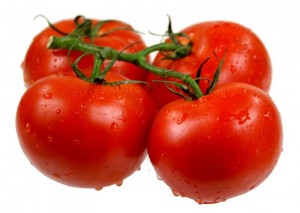In our first two installments of this series we talked about The Doctrine of Signatures. If you have not read those yet you can find Part1 and Part2 and read those first! Today we will summarize the series.
SUMMARY IN THE ENERGETICS OF FOOD
I can tell you how good one food is and how bad another is, but if I don’t make it personal, you may never feel the conviction needed to alter a path leading to disease and death. You  no doubt understand from the previous chapters that you don’t often get a chance in really choosing the foods you like because the brainwashing in advertising combined with the inherited dietary protocols and additives that appeal to senses beyond your control do much of the choosing for you. Once you have advanced to the point that you are no longer a puppet of the commercial market and you begin to really eat and experience food as you want to, not as they would have you to, what will food mean to you? Before moving into this chapter, I thought it would be wise if you knew yourself and were able to pass this on to your clients, friends and family.
no doubt understand from the previous chapters that you don’t often get a chance in really choosing the foods you like because the brainwashing in advertising combined with the inherited dietary protocols and additives that appeal to senses beyond your control do much of the choosing for you. Once you have advanced to the point that you are no longer a puppet of the commercial market and you begin to really eat and experience food as you want to, not as they would have you to, what will food mean to you? Before moving into this chapter, I thought it would be wise if you knew yourself and were able to pass this on to your clients, friends and family.
We know that we are each unique. Some of us have small hands and feet, some large. We are different in length and weight, and each of our noses and mouths and ears are very different. Food is just as different. We are all from the human race, but we are all very different with varying characters and personalities. If 50 humans were placed in an office, each would have a different task and ability. So it is with food. You can place vegetables in a class of their own as you did the humans, but what is the different task and function of each individual vegetable? This is what should be considered, in part, as you begin to think of the diet that is best for you.
There are many factors that can be taken into consideration with a particular food. Color is one of these. Red is associated with strength, sensuousness, defensiveness, intensity and heat. Green often has associations of coolness, openness, independence and spontaneity. Brown tends to denote earthiness, security, comfort, boredom and blandness. Black foods have associations of distress and melancholia and at the same time dignity, strength and power. Now you wonder, is the color of a food really going to influence these properties in the person eating them? Absolutely. The changes will be subtle, but assuming the color is natural instead of chemically placed and the food is of high quality, you will surely begin to notice changes in your life. Food is powerful. Think about it, though. Humans are the most intelligent life forms on earth, created in the image of God, a being so awesome He is not fully comprehendible. All of life was created by the same God, and unless you are willing to dispute yourself as wondrously made, you must assume that creation is pretty incredible. Creation includes all of the things that were intended to support life, chiefly man. Is it so hard to imagine that all things have an influence, and the more subjected you are to each, the more influential it will become to you?
Factors that should be noted in the energetics of food
- How does a food grow? Does it sprout from a seed, or does it hatch from an egg? Is it germinated? Does it require a lot of maintenance or nurturing? The qualities of each food will feed those same qualities in you. If you feel that you have not been nurtured enough, those foods that require more nurturing would feed those qualities in you. These would be good foods for you.
- How fast does the food grow? Some plants can manifest growth in hours while others take weeks and months. It may be wise to eat foods that grow at a rate similar to your growth pattern. Are you a slow, methodical person or a fast, high-strung person? Or, perhaps you are out of balance in the way that you are, so you need to eat foods that would supply the opposite qualities that you are currently manifesting. Maybe you are fast and high-strung but you need to slow down, or maybe you are too introverted and need to come out and live a little. Which qualities do you wish to feed? When you decide, you need to pick the appropriate foods.
- What direction does the food grow in? Does it grow down into the earth or out above the ground? Does it wind up a pole or into the ground or does it grow straight? Each food has its own level. A pear begins high in a tree and ends by falling to the ground while a potato begins in the ground and ends there as well. Those foods that grow low to the ground support the lower parts of the body while foods that grow up high or in an upward direction help to stimulate the upper parts of the body. Do you need help keeping your head out of the clouds? Perhaps you should eat more foods that grow in the ground and stay in the ground through the growing process. These would be grounding foods. Maybe you need to have your sights raised because you just can’t see past the circumstances in front of you. Maybe you should eat the foods that grow high in the trees.
- What is the rhythm, or behavior, of a food? There are four classifications of rhythm: fast, regulated; slow, regulated; fast, unregulated; and slow, unregulated. The rhythm of a food can have dynamic effects on your biological and psychological behavior. Alcohol has a slow, irregular rhythm that produces an unwinding effect. The more you drink, the more you unwind. For some people, unwinding is becoming less serious, which makes them laugh. Some get violent because their nature is violent and when they’re unwound they do not have to control it anymore. Coffee has a fast, irregular rhythm with an effect that can be noticed as soon as it is ingested. So the person who has a slower nature feels the increase in rhythm produced by the coffee while a person who is already at that pace feels nothing. Spices have fast, regular rhythms, eggs have slow, regular rhythms, etc. It is time for you to decide what kind of rhythm you want. You may need to ask a couple of friends, as many of us get caught up in our own rhythms and are not always as aware of our own nature as those who are dealing with us. So get a second opinion about some of these things. If you eat foods with fast, regular rhythms, you can easily get ahead of yourself. You will accomplish a great number of things, more than the average person, but you have a very hard time if anyone gets in your way. If you are already of this nature, you may want to avoid these food. If you eat a lot of foods with fast, irregular rhythms, you will be able to do many things, but they may be random and haphazardly. You may get in your own way with too many of these foods. Foods with slow, regular rhythms help you to become more stable and less erratic. You won’t necessarily be the most exciting or dynamic person, but you will be reliable. Foods with slow, irregular rhythms will help you relax and take it easy, yet you may get frustrated and notice a desire for more stimulating things to do. Remember, too much of one rhythm will create an imbalance, so you will need to vary and rotate so that you are balanced in the foods you eat. As the author of Energetic Foods says, “We are beyond nutrition, this is internal music appreciation.” Wow, I think that is good stuff!
- Another main characteristic to gauge food by is the temperament. Hot, warm, cool and cold can be combined with dry and damp to make eight major variations. Hot and dry, hot and damp, warm and dry, warm and damp, etc. Chicken has a warm, dry temperament relative to duck, which lives partially in a water environment, is higher in fat and has a hot and damp temperament. The meat of a chicken is more dry relative to duck meat, which is more greasy. Both chicken and duck are animal foods, which gives them both a warm-to-hot temperament. Beef and eggs both have a hot and damp temperament, yet they are different in activity and texture. Venison is much more nimble than beef, so they are hot and dry.
You can see that a diet lacking in diversity cannot support all the complex elements of the human body. At this point, you should pick up a copy of The Energetics of Food by Steve Gagne. In it he explains most of what I have discussed above, but he lists all types and categories of food and their qualities on an energetic level.
Along with the information supplied in The Energetics of Food, you may want to read the following:
1. Foods that Heal by Bernard Jensen
2. Heinerman’s Encyclopedia of Nuts, Berries and Seeds by John Heinerman.
3. New Encyclopedia of Fruits and Vegetables by John Heinerman.
